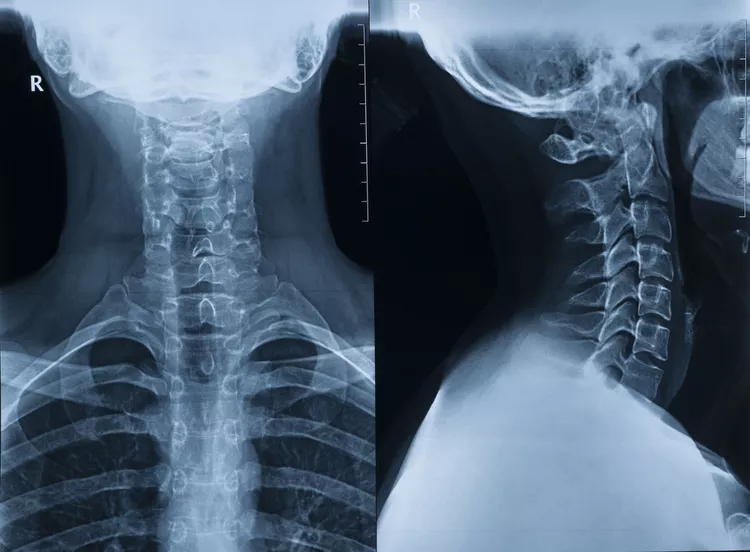Cervical Rib: Understanding a Rare but Significant Condition

Introduction
Cervical ribs are an anatomical variation that can lead to various health issues, including thoracic outlet syndrome. Although they are relatively uncommon, occurring in approximately 0.2% to 0.5% of the population, understanding cervical ribs is crucial for effective diagnosis and management. This article explores the causes, symptoms, diagnosis, treatment options, and prognosis associated with cervical ribs.
What is a Cervical Rib?
A cervical rib is an extra rib that develops from the seventh cervical vertebra (C7) in the neck. It can vary in size and shape and may be complete or incomplete. While most individuals with a cervical rib remain asymptomatic, some may experience complications due to nerve or blood vessel compression in the thoracic outlet area.
Historical Background
The existence of cervical ribs has been documented since ancient times, with early anatomists noting their presence in various species. The first detailed description of cervical ribs in humans was provided by Galen in 150 A.D. Over the centuries, medical understanding of cervical ribs has evolved, particularly regarding their potential to cause thoracic outlet syndrome. In the 19th century, physicians began to recognize the clinical significance of cervical ribs, leading to increased awareness and research into their implications.
Anatomy and Pathophysiology
The anatomy relevant to cervical ribs includes:
- Cervical Vertebrae: The seven vertebrae (C1-C7) that form the neck.
- Thoracic Outlet: The space between the collarbone and the first rib where nerves and blood vessels pass.
Pathophysiologically, cervical ribs can compress nearby structures, including:
- Brachial Plexus: A network of nerves that controls arm movement and sensation.
- Subclavian Artery and Vein: Blood vessels that supply blood to the arms.
This compression can lead to symptoms associated with thoracic outlet syndrome.
Causes
Cervical ribs are primarily a congenital condition resulting from abnormal development during fetal growth. Factors contributing to their formation include:
- Genetic Predisposition: A family history of cervical ribs may increase the likelihood of their occurrence.
- Developmental Anomalies: Errors during embryonic development can lead to the formation of an extra rib.
While most individuals with a cervical rib do not experience symptoms, those who do may have additional risk factors such as poor posture or repetitive arm movements that exacerbate compression.
Symptoms and Clinical Presentation
Many people with cervical ribs remain asymptomatic; however, when symptoms do occur, they may include:
- Neck Pain: Discomfort localized around the neck area.
- Radiating Pain: Pain that travels down the arm into the shoulder or hand.
- Numbness or Tingling: Sensations in the fingers or hand due to nerve compression.
- Weakness: Reduced strength in the affected arm or hand.
- Coldness or Color Changes: Alterations in temperature or color of the hand due to vascular compression.
Recognizing these symptoms early is essential for seeking appropriate medical advice.
Diagnosis
Diagnosing a cervical rib involves several steps:
- Medical History Review: A thorough assessment of symptoms and any relevant medical history.
- Physical Examination: A healthcare provider will assess neck mobility, strength, reflexes, and sensory function.
- Imaging Studies:
- X-rays: Can reveal the presence of a cervical rib and assess its size and orientation.
- MRI: Provides detailed images of soft tissues and can show any nerve compression.
- CT Scans: Useful for visualizing bony structures and assessing spinal canal narrowing.
- Electromyography (EMG): May be performed to assess nerve function and identify any abnormalities.
Early diagnosis through routine screenings is vital for effective management.
Treatment Options
Treatment for cervical ribs depends on whether symptoms are present and their severity:
- Conservative Management:
- Physical Therapy: Tailored exercises focus on improving strength, flexibility, and posture while reducing pain.
- Medications: Nonsteroidal anti-inflammatory drugs (NSAIDs) may help manage pain and inflammation.
- Epidural Steroid Injections: Corticosteroids injected into the epidural space around the spinal cord can help reduce inflammation and relieve pain.
- Surgical Interventions:
- Decompression Surgery: Aims to relieve pressure on affected nerves by removing bone spurs or herniated discs.
- Cervical Rib Resection: In cases where significant symptoms occur, surgical removal of the cervical rib may be necessary.
Surgical options are generally considered when conservative treatments fail or if symptoms progress significantly.
Prognosis and Recovery
The prognosis for individuals with cervical ribs varies based on several factors:
- Severity of Symptoms: Patients with mild symptoms generally have better outcomes than those with severe manifestations.
- Timeliness of Treatment: Early intervention significantly improves recovery chances.
Many individuals experience improvement in symptoms with appropriate management; however, some may face long-term disabilities requiring ongoing support.
Living with Cervical Rib
Living with a cervical rib requires ongoing management:
- Regular Follow-ups: Continuous monitoring by healthcare providers is essential for managing long-term effects.
- Lifestyle Modifications: Engaging in regular physical activity, maintaining good posture, and avoiding heavy lifting can help manage symptoms.
- Support Networks: Connecting with support groups provides emotional assistance for both patients and families navigating this condition.
Education about recognizing symptoms early empowers patients and caregivers to seek timely medical attention when needed.
Research and Future Directions
Research into cervical ribs continues to advance our understanding of their mechanisms and treatment options:
- Neuroprotective Strategies: Investigating ways to protect nerve tissue during ischemic events holds promise for improving outcomes.
- Innovative Therapies: New medications aimed at enhancing recovery after surgery are being explored.
These research efforts are crucial for improving patient care related to this complex condition.
Conclusion
Cervical ribs represent a rare but significant anatomical variation that can lead to various health issues. Understanding their causes, symptoms, diagnosis, treatment options, and long-term management strategies is essential for patients and caregivers alike. With ongoing research aimed at improving diagnosis and therapeutic options, there is hope for better outcomes for those affected by this condition.
Disclaimer: This article is intended for informational purposes only and should not be considered medical advice. Always consult with a qualified healthcare provider regarding any medical concerns or conditions.
